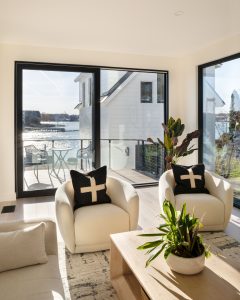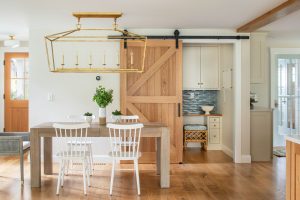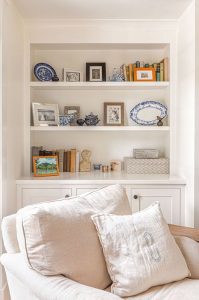From choosing furniture placements and paint colors to using lighting within a space, there is a lot to consider when it comes to turning a house into a beautifully designed home. Here are eight common interior design mistakes to avoid and how to fix them to help turn your space into the home of your dreams!
Improper Space Planning
There’s nothing worse than buying all of your furniture and then realizing you can’t fit it through the entryway to your living room! Measure your space before purchasing furniture pieces, and this can be avoided. Once you have your measurements and a thought-out space plan, then you’ll have a better idea of the dimensions your furniture needs to be. This can save you precious time and money.
Disproportionate Furniture
If you’re trying to add interest and visual appeal to your home, it is crucial not to make everything in your living space the same height. Instead, the trick is to mix the scale and implement the “skyline” approach. Just like a city skyline, not all structures are the same shape or height. Try mixing in furniture pieces of varying shapes, height, and sizes to keep it interesting. You want to make sure the visual weight of your furniture is balanced so your space looks proportional.
Choosing the Wrong Paint Color
Choosing the wrong paint color can seriously defeat the vibe of a room. What if you spend all this time painting every wall in your house a paint color you thought would look great, but it actually turns out to make your entire home look flat, and it is totally the wrong shade? You can avoid this by sampling the colors you’re considering before committing gallons of paint and hours of work just to realize your chosen color is not best suited for the look you imagined! If you don’t know where to start in choosing a color for your home, try using the color theory approach to create a theme and see how colors may relate to each other within your space.
Using Too Many Patterns in One Space
Patterns are a great interior design element because they add visual interest to a room and help convey design styles. When placed correctly, patterns provide seamless flow so your eyes can travel around the room. Too many patterns tend to compete against each other and can become a total eyesore! Instead of having an accent chair, rug, pillow, and throw blankets of all different patterns, pick one key pattern piece and layer it in solids and textures to help bring the design all together. This will help create visual depth and a more cohesive look within your home.
Making Functionality an Afterthought
When designing a home to fit your needs, it is important to make sure it functions the way you need it to! A common design mistake is to only focus on style and let functionality become an afterthought. How you intend to use your space should play a key factor in picking your furniture, materials, and accessories. For those who come home with a lot of coats and bags, it is essential to have a place near your entryway to store them. Since well-designed homes equally focus on form and functionality to fulfill their intended purpose, it is important to remember this.
Relying Solely on Overhead Lighting
Overhead lighting can create harsh and unflattering shadows around your home. These shadows tend to be darker, and this can give off a gloomy and uncomfortable atmosphere, which is not what most people are looking to achieve. To avoid this and deliver a more comfortable and inviting feel, you should aim to layer ambient, task, and accent lighting throughout your space. This can be done by utilizing bedside sconces, table lamps and floor lamps and you should aim to use lightbulbs within the 2000K to 3000K range on the lighting color temperature scale to add a soft warm light to your space. This will help bring in warmth and make your home feel like a cozy place to relax. Without these extra lighting elements, your home will feel very cold, dark, and almost incomplete.
Improperly Hung Art
Art can be a striking piece to help transform a space while creating a sense of completion in a home if done right. A common mistake that people make is hanging their art too high above furniture pieces. It shouldn’t look like the art is floating in space, so the rule of thumb is to hang it roughly 8-10 inches above the furniture to create a cohesive and balanced look. The center of the art piece should be at eye level, which is roughly 60” inches from the floor. To experiment with the placement, try using masking tape to put on the walls at the desired spot to see how it would look before you commit to it.
Too Matchy-Matchy
Far too often, we see people with a desire to make their homes look cohesive and well put together, and they have matching sets from the same furniture store that are taking over their space. Instead of making your furniture too matchy-matchy, you should try matching different pieces to create a collective look. Too many pieces of matching furniture would look and feel monotonous and you definitely don’t want your home to look like a furniture store showroom. Instead, try adding interesting elements to your space by pulling in various pieces that offer contrast and ooze with personality. Buy furniture secondhand at local antique stores, or sites like 1stDibs, to create intrigue in your home. At the very least, avoid doing 100% of your furniture shopping at stores like Crate & Barrel, Pottery Barn, and Restoration Hardware.
If you are unsure how to start and want some professional interior design advice to avoid these mistakes in your home, consider booking a free design consultation with Amy here!




![]()
![]()
